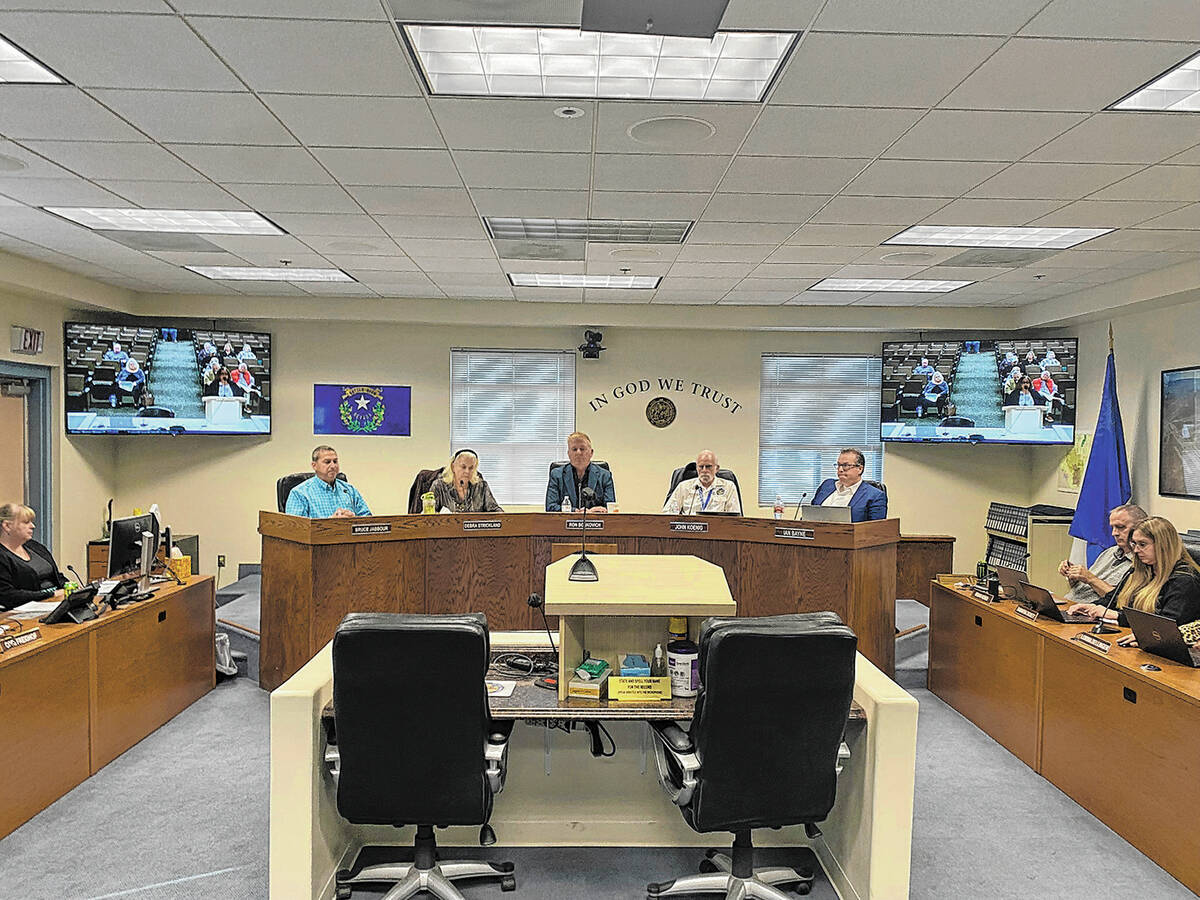Nye County landfill parcel fees could go up
With Nye County’s landfill fee fund facing a $736,000 budgetary shortfall, local landowners could see an increase in the landfill parcel fee that appears on their property tax bill this year.
At its first meeting of 2025, the Nye County Commission addressed a resolution that would authorize the increase, as well as instituting tipping fees for those who do not live in Nye County.
Nye County Public Works Engineering Technician Cody McKee provided the board with an overview of the request, explaining that like many other things, the need is being driven by rising costs.
“As you know, with inflation, the cost of operating landfills has increased. That has created a budget shortfall and the intent of this fee increase is to basically make us whole and to be able to fund our landfill operations,” McKee explained on Jan. 6. “This also gives us some funding to make some strategic purchases for necessary landfill equipment, such as a trash compactor and also helps us become compliant with the Nevada Dept. of Environmental Protection mandate that we install scales at our Tonopah landfill.”
Aside from the parcel fee portion of the resolution, commission chair Ron Boskovich homed in on the section setting fees for non-residents.
“It’s my understanding that this is going to close a loophole that is being allowed, where people outside of Pahrump or Nye County can bring in their garbage and dump it and we just accept it, free of charge,” Boskovich said.
“Yes, that’s the ‘Reader’s Digest’ version of it,” Nye County Public Works Director Tom Bolling agreed.
Newly seated commissioner Ian Bayne then asked for clarification, inquiring, “This will affect all people’s fees, correct? It’s not just affecting people from out of town or out of the county?”
“This would increase residential property and vacant property [per parcel fee] by $5 per year. It increases from $30 per year to $35 per year,” McKee replied.
Bayne also questioned when the landfill fee fund had last seen a positive balance, which McKee said had last occurred in fiscal year 2020-2021. Each year since, operational costs have outweighed revenue.
“Now, we do have a nest egg that we’ve built up from the years of collecting dollars, so it’s not like we’re out of money,” Nye County Public Works Director Tom Bolling adding. “But we have to show an increase in revenues coming in because eventually landfills fill up. Eventually, we’re going to have to dig new landfills, we’re going to have to expand landfills and that has become severely costly.”
Commissioner John Koenig, who also joined the board as of Jan. 6, had no qualms about expressing his thoughts on the matter, asserting that the county had been “kicking the can” on the subject for far too long already.
“The other landfills are filling up. And we know what happens when a landfill fills up – you’ve got to fix it, so it looks like it used to and you’ve got to somehow open a new landfill. We know that whole exercise is going to cost us many millions of dollars,” Koenig remarked. “All we’ve done for the last ‘x’ number of years is talk about it… If we don’t do something pretty soon, it’ll be time… I don’t know what we’ll do because we won’t have a hole in the ground to put the garbage… It’s time to do something.”
Bayne, however, felt more data was needed and other commissioners apparently agreed. Commissioner Bruce Jabbour made the motion to continue the item so as to allow for more in-depth backup information, with a second from commissioner Debra Strickland.
“Because this is a tax. It’s a tax on every property owner in the county that they weren’t prepared for,” Jabbour stated.
The motion passed with all in favor and the resolution will be readdressed at the board’s Tuesday, Feb. 4 meeting.
Contact reporter Robin Hebrock at rhebrock@pvtimes.com

















